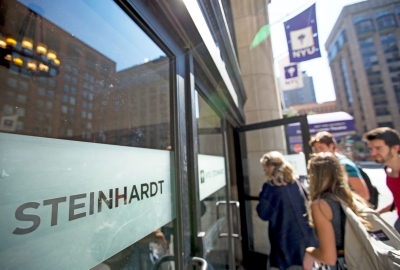Continued development of sight-singing, dictation, and aural analysis
skills developed in the prerequisite course, Advanced Aural Skills:
Chromatic Harmony. Students will critically listen to, transcribe, and
perform music incorporating modes, chromatic and jazz harmony, extended
tonality, and atonality. Advanced rhythmic topics include polyrhythm,
syncopation, swing, mixed meter, and metric modulation.
Course #
MPATC-UE 9342
Credits
1
Department


